Microgreens have great benefits for the body and have a rich aroma. More and more people are trying to grow it on their own. To always enjoy greens, you need to freeze them. Read more about whether can you freeze microgreens in this article.

Contents
What types of own microgreens are suitable for freezing?
Before proceeding with the study of the issue, can you freeze microgreens, you should familiarize yourself with which types are intended for freezing. You should first try fresh microgreens to appreciate their flavor. You can also place it in the refrigerator, where it will keep for up to 2 weeks.
Broccoli microgreens and radish microgreens are best for freezing. In the process of freezing, the concentration of the level of sulforaphane isothiocyanate begins to increase, since the cell walls are damaged. When defrosted, the compounds react with proteins, so the microgreens are denser.

Features of sulforaphane
This compound is often found in vegetables that belong to the cruciferous family. Scientists are constantly studying this component because it benefits the body.
According to research, sulforaphane is a natural antioxidant.
At the same time, it fights bacteria and microbes and helps to remove inflammation in the body. It is believed that it prevents cancer and also contributes to the protection of nerve endings. The component helps to fight the signs of aging and copes with the symptoms of diabetes.

Features of freezing microgreens
It is not recommended to freeze microgreens as they lose their texture. However, if you decide to do this, then you should follow several steps.
How to prepare microgreens?
Prepare your microgreens before freezing. First, rinse it to remove dirt. After it should be dried. If this is not done, the water will turn into crystals and will damage the leaves more. Because of this, microgreens can lose their nutritional value.
How to freeze?
Once the leaves are dry, you can lay them out on a tray. They should be well separated so that they do not stick together and are not damaged. Place the tray in the freezer for several hours until completely frozen. Transfer the leaves to an airtight container and store them until use.
How to freeze microgreens for smoothies?
Most often, frozen microgreens are used to make smoothies. This is due to its texture after defrosting. To freeze smoothie microgreens, they also need to be rinsed first. The collection of greenery must also be correct. Make sure that there is no dirt or seed coat on the surface.
Otherwise, the greens will be unsafe to use. You can freeze it in a bag or container, as well as on a tray, as mentioned earlier. Freezing in ice cube trays is also a good option.
The worst way to freeze microgreens is in their original containers. Yes, you can easily place the product in the freezer. However, when frozen together, the leaf plates will turn into a tangled mass. Therefore, it is better to pre-cut the microgreens into pieces, and then freeze them.
It is appropriate to freeze microgreens in ice cube trays. First, the greens are finely chopped, after which they are laid out in molds. Add some water and place it in the freezer. After that, you only need a few cubes to make a smoothie. The rest can be kept in the freezer.

What happens to microgreens when frozen?
When you freeze microgreens, it causes the water to crystallize. Because of this, cell walls and other structures can be damaged. After, when the greens thaw, the texture changes.
Fresh herbs are crunchy and quite tasty. But after freezing, it is no longer so.
The texture becomes more viscous. Especially if you do not cut it into small pieces first. The optimal size of the pieces is ½ inch. It all depends on what exactly you use the microgreens for.
How can frozen microgreens be used?
As mentioned, the texture of frozen microgreens will be slightly worse than fresh options. However, the blank can be used to make smoothies.
Some housewives add microgreens to flavor soups, especially combination recipes. This helps to level out the viscous texture. You can add microgreens when making lasagna.
Storing microgreens in the refrigerator
If you want to preserve the nutritional content, taste, and color of your microgreens, it’s best to store them in the refrigerator. If you do it wrong, after a few hours it will deteriorate. If you have grown microgreens at home on your own, then you should collect them correctly.
It is recommended to cut as many greens as you can consume in a few days. Otherwise, the fresh produce will start to deteriorate, and you will have to throw it away. Further actions consist of several stages, which will be discussed below.
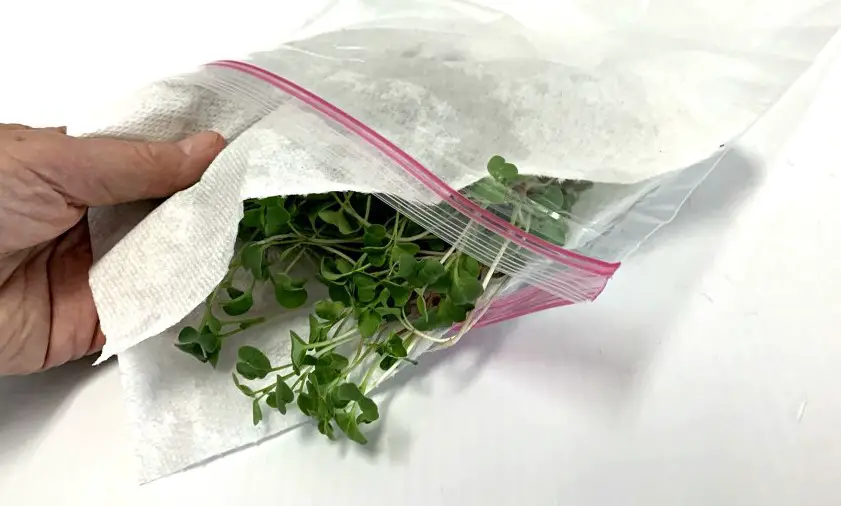
Slicing
To cut microgreens for later storage, it’s best to have the right tools ready. You can use a knife or scissors. The tool must be made of ceramic. They are non-toxic and chemically inert to microgreens.
This suggests that the instruments will not transfer ions to the slices. Thanks to this, the greens will not oxidize and turn brown.
Cooling
After, you need to fill a deep container with very cold water, to which 1 teaspoon of bleach is added. Microgreens need to be washed. Next, wet microgreens need to be dried a little. This will sterilize the product, which will prevent the formation of mold.
This slows down the biological processes that cause microgreens to turn dark. Sterilization significantly increases the shelf life of greens that will be stored in the refrigerator.
The best place to store microgreens correctly
Airtight containers should not be used for storing microgreens, as they can speed up the spoilage of greens. If you want that microgreens stay fresh, they need constant access to moisture and air. Therefore, it makes sense to use open containers for storage.
If you do not want dust and dirt to accumulate on the surface of the greens, you can cover the container. To do this, it is better to use a paper towel, which will provide air circulation.
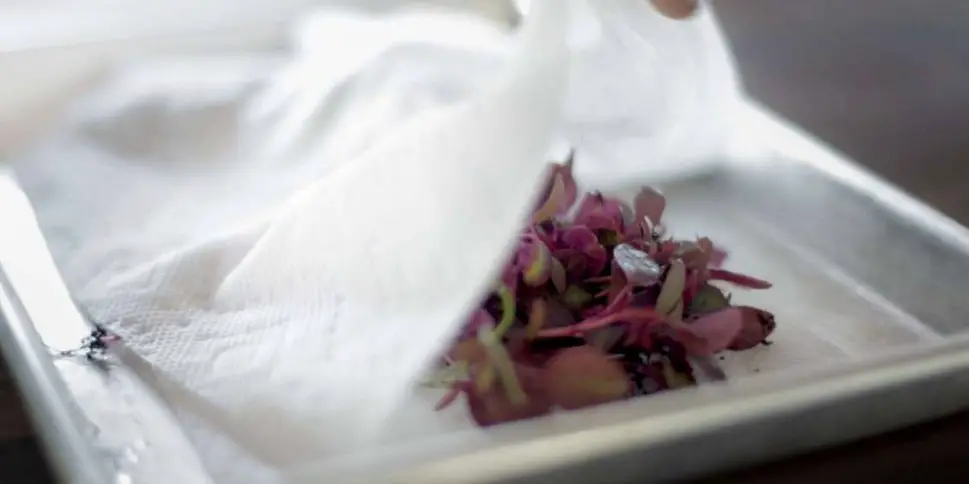
Optimum temperature
On average, you can store your microgreens in the refrigerator for about 1 week. Therefore, it is recommended to set the temperature in the refrigerator to 40 degrees Fahrenheit. If you notice white spots, mucus, or an unpleasant odor on the surface, it is better to discard the greens immediately.
After all, it is not safe to use.
If the temperature in the refrigerator is at 40 degrees Fahrenheit, the shelf life of microgreens can be extended up to 14 days. If the temperature is around 50 degrees Fahrenheit, then the shelf life is reduced to a week.
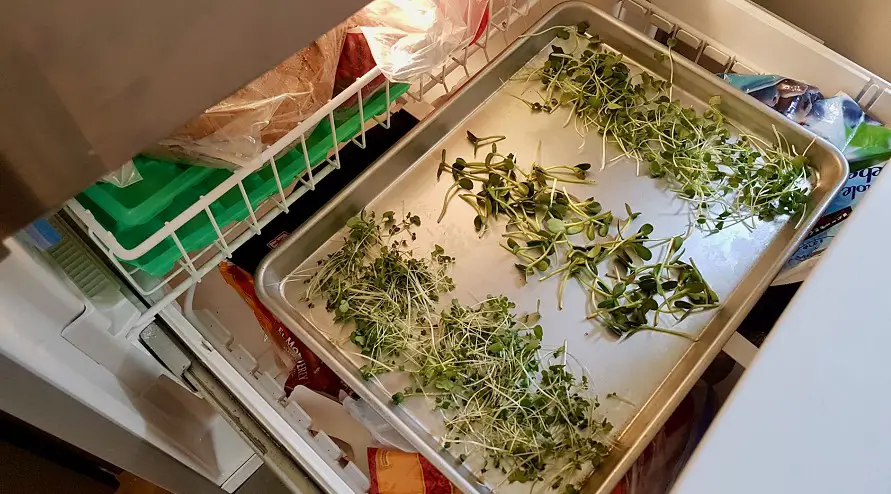
Features of drying microgreens
Most often, people try to put the collected microgreens in the refrigerator or freezer. However, drying the greens is no less the best option. This is the best solution if you do not plan to use it often.

How to dry properly?
To dry microgreens, you can use the same methods as you would with other vegetables. The simplest and most effective method is to use a food dehydrator. You must first study its instructions, and follow all the recommendations.
You also need to rinse the microgreens in advance and dry it.
Use of the oven to dehydrate microgreens
If you don’t have a food dehydrator, you can dry your microgreens in a conventional oven. You need to spread the greens on a baking sheet and put them in the oven.
It is recommended to set the most minimal mode and hold it until the greens dry. On average, the process can take up to 8 hours. Therefore, it is better to periodically check the condition of dehydrated microgreens.
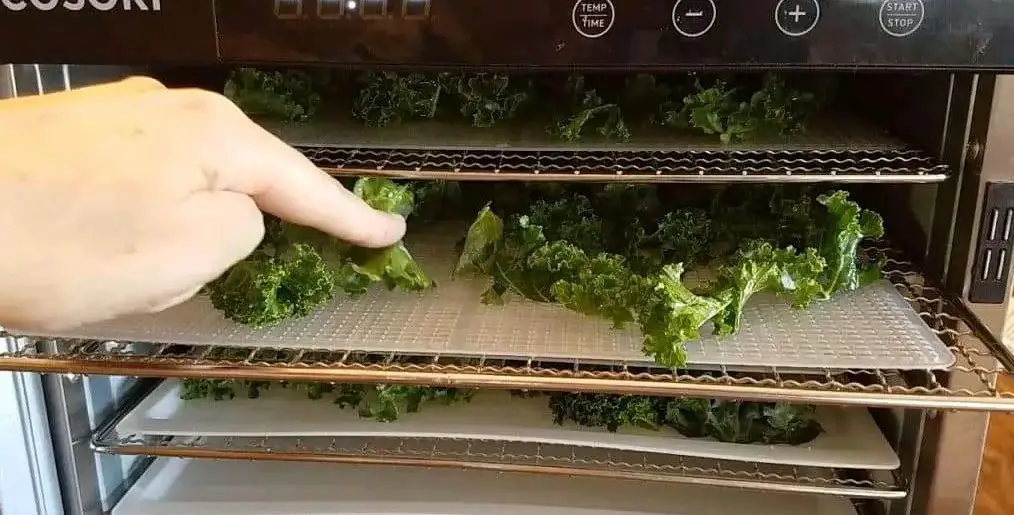
Using the toaster to dehydrate microgreens
If you don’t have an oven or don’t want to use it for dehydrating microgreens, you can use a regular toaster. It is also necessary to set the minimum mode and place the greens inside the sections until it is completely dry. Make sure that condensation does not form. And you can have dehydrated microgreens very quickly.
Using the microwave to dehydrate microgreens
This method for dehydrating microgreens is delicate. You need to get used to it properly. It should be noted that all microwave ovens are individual, so the operating time may vary.
Try to set the minimum power on the device. Greens need to dry a little. Therefore, try to check its condition periodically.
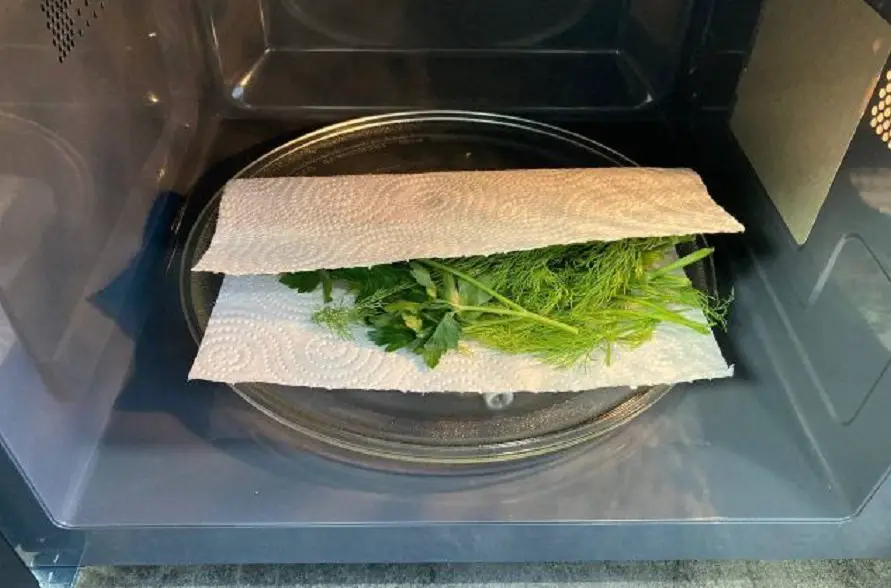
Drying out in the sun
This option is in great demand due to its simplicity. You can tie the microgreens into small bundles and then leave them in the sun for a few days. If you want drier greens, you can leave longer. You can cover the greens or not. It all depends on your preferences.
You can also use special boxes that are designed for dry herbs.
They consist of a frame made of wood, on which there is a screen.
Microgreens should be laid out on it. However, the easiest way is to hang the bundles in the sun. After all, you do not have to constantly monitor them, and you can go about your business.
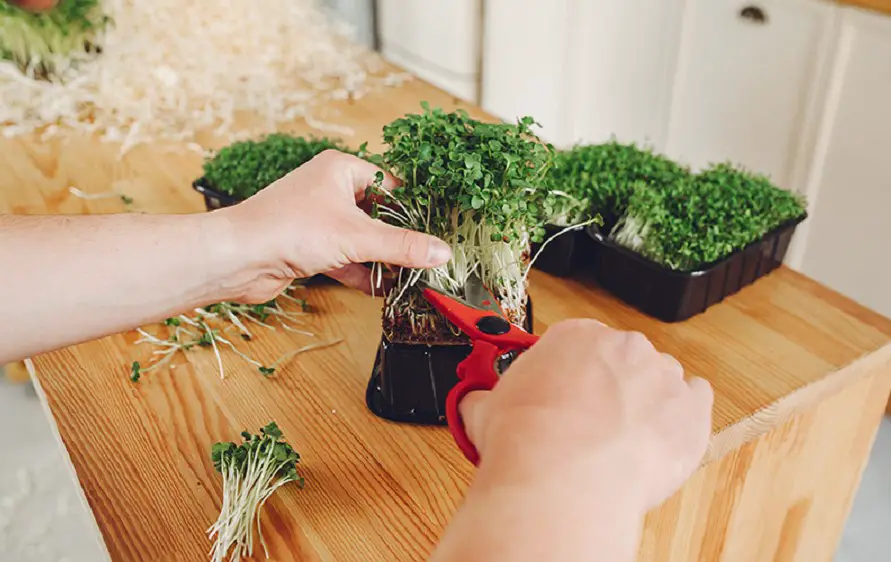
FAQ
When it comes to freezing microgreens, there are many questions to ask.
How do you preserve microgreens?
The easiest way to store microgreens is to spread them between paper towels. After the design is placed in a plastic bag that closes, or in a bag. After that, you can store your microgreens in the refrigerator. This keeps the microgreens for a week.
Can you freeze micro sprouts?
You should freeze microgreens for half an hour, spreading them on a tray or parchment. Leaves should not be allowed to come into contact, as they may stick together. After 30–60 minutes, you can move the microgreens into a bag or container, and send them to permanent freezing.
How do you increase the shelf life of microgreens?
To prolong their life, store them in a resealable bag lined with paper towels. This prevents the food from absorbing additional moisture.
How long do microgreens last in the fridge?
On average, you can store microgreens in the refrigerator that was properly prepared for 10–12 days. If you grew it yourself, then the shelf life can be up to two weeks.
Results
As you can see, you can freeze microgreens. However, it is better not to do this because it will lose its texture, because of which it will lose its appetite. It is better to store microgreens in the refrigerator, or constantly grow them on the windowsill to get microgreens fresh.


